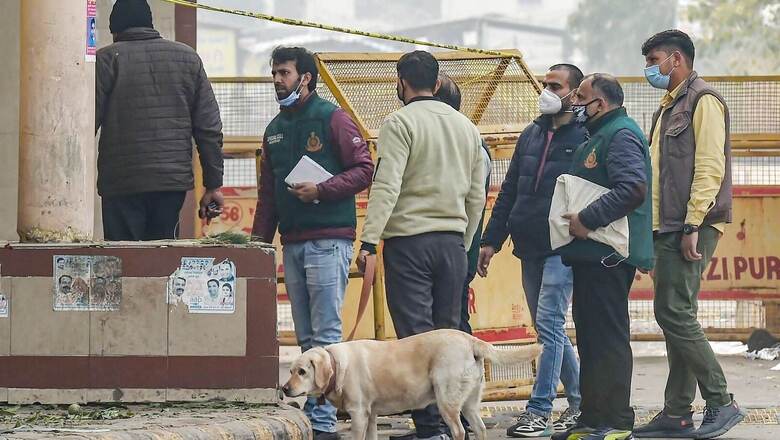
views
In the past few weeks, the National capital has seen two major recoveries of Improvised Explosive Devices (IED) – at Seemapuri on February 16 and flower market in east Delhi’s Ghazipur on January 14 – which, according to the police, were transported to Delhi for blasts.
According to sources, these recoveries are not restricted to Delhi, but are linked to other recoveries in Punjab, Uttar Pradesh, Jammu and Kashmir. Sources confirmed that the police are probing if one or more consignments were brought together and transported to different cities for terror attacks.
The Delhi Police are yet to make a breakthrough in the Ghazipur case and are taking help of Central intelligence agencies to find the network and route used to transport the IEDs. They are checking if the recoveries have any link to Uttar Pradesh, as both the recoveries were close to the UP border.
SPIKE: A CAUSE FOR CONCERN
Investigating and intelligence agencies are concerned about the massive spike in cases of supply of arms and ammunition across the border in the past one year. Drones have been used to supply the arms, said sources. Jammu and Kashmir has also seen a massive rise in IED attacks and recovery, which is likely to be the entry point for such consignments, along with Punjab.
According to government data, the Border Security Force (BSF), which guards Indo-Pak border has seized the highest number of arms and ammunition being smuggled from across the border in the past three years. The Punjab border has seen almost 450% more seizures than the Jammu border, which used to be a priority for terrorists, said sources.
According to the official data, the amount of arms and ammunition seized in 2019 and 2020 were not even half of last year’s seizures.
Similarly, Jammu and Kashmir has also seen a massive rise in IEDs attacks, recoveries etc in 2021.
According to the official data, jihadists have started adopting the Maoist strategy of planting IEDs to target soldiers, especially since the 2019 Pulwama attack in which 40 CRPF jawans were killed.
Data accessed by News18 showed that IED and explosives attacks in Jammu and Kashmir valley has seen a rise of 1100%.
WHAT IS AN IED?
IEDs are prepared from multiple electrical components, including a switch, an initiator, a charge, a power source, and a container. US Homeland Security says that IEDs may be surrounded by or packed with additional materials or ‘enhancements’, such as nails, glass, or metal fragments designed to increase the amount of shrapnel propelled by the explosion.
Enhancements may also include other elements such as hazardous materials. An IED can be initiated by a variety of methods depending on the intended target.
US Homeland Security also says that because they are improvised, IEDs can come in many forms, ranging from a small pipe bomb to a sophisticated device capable of causing massive damage and loss of life.
IEDs can be carried or delivered in a vehicle; carried, placed, or thrown by a person; delivered in a package, or concealed on the roadside. The term IED came into common usage during the Iraq War that began in 2003 and went on until 2011.
Read all the Latest News India and Breaking News here



















Comments
0 comment